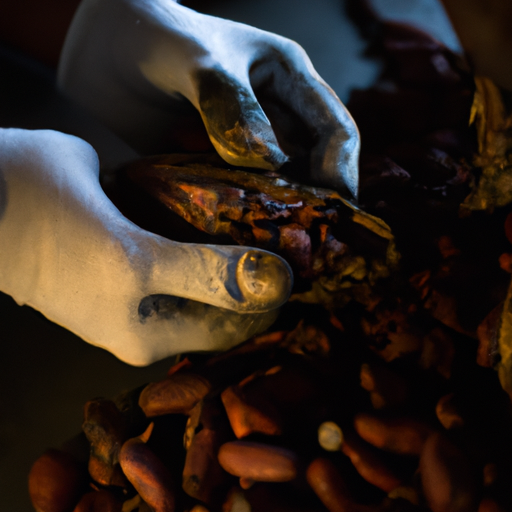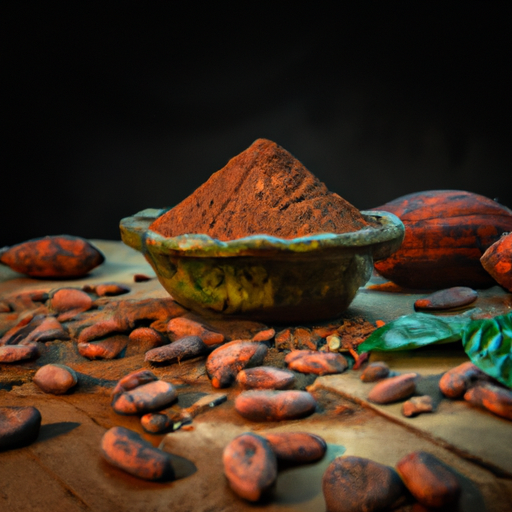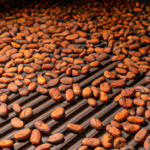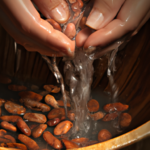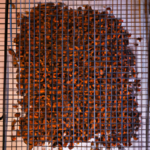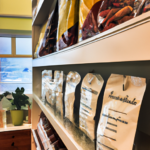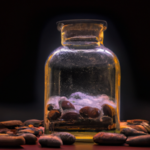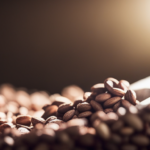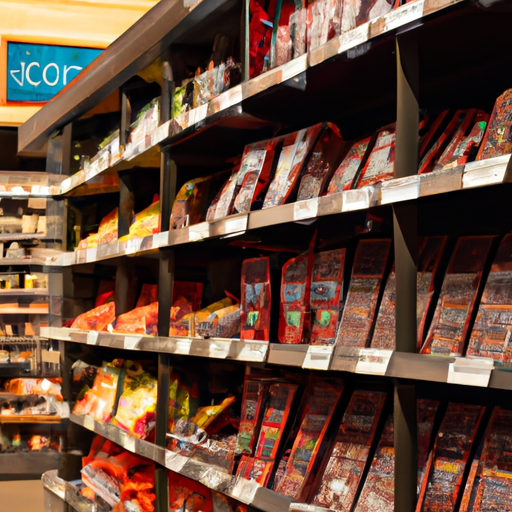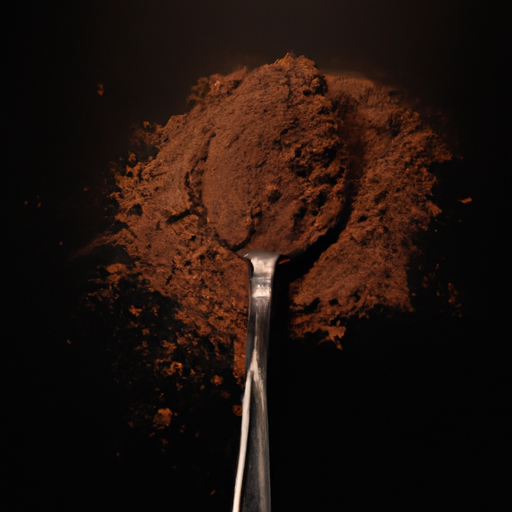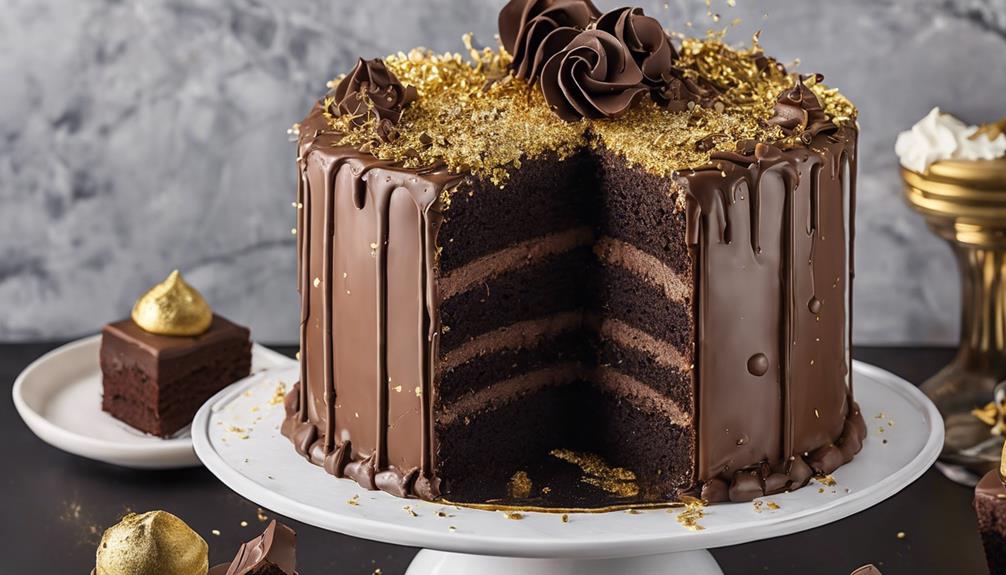I understand your apprehension – removing the shell from raw cacao beans may seem like a challenging job. However, I assure you that with the proper tools and some knowledge, it can actually be quite simple. In this article, I will walk you through the steps of deshelling raw cacao beans in a semi-industrial manner, so you can maximize the yield from your cacao beans.
First, we’ll gather the necessary equipment, including an oven and a grinder.
Then, we’ll sort and clean the raw cacao beans to ensure we’re working with the best quality.
Preheating the oven is essential before we crack and remove the shells, followed by the winnowing process to separate the nibs.
Once we have our deshelled nibs, we’ll grind them to the desired consistency.
By following these steps, you’ll be able to use your deshelled cacao in a variety of recipes, from chocolate bars to hot beverages.
So, let’s get started and unlock the potential of raw cacao in your kitchen.
Key Takeaways
- Understanding different types of cacao pods and shell thicknesses
- Developing a technique to crack open pods without damaging the beans
- Experimenting with tools and methods for deshelling
- Precision in roasting for desired flavor enhancement
Gather the Necessary Equipment
Before you start, make sure you have all the equipment you’ll need to effectively deshell raw cacao. Having the right tools can greatly enhance your efficiency and overall experience. One crucial aspect of deshelling raw cacao is equipment maintenance. Regularly inspect and clean your equipment to ensure optimal performance and longevity. This includes checking for any loose or damaged parts, lubricating moving components, and removing any residual cacao debris.
Additionally, consider alternative deshelling methods such as using a hammer or a specialized cacao deshelling machine if you have a large quantity to process. These methods can save time and effort, but be sure to follow proper safety precautions.
Once you have gathered your equipment and ensured its functionality, you can proceed to the next step of sorting and cleaning the raw cacao beans.
Sort and Clean the Raw Cacao Beans
During the sorting and cleaning process of the cacao beans, it is fascinating to note that approximately 20% of the beans are discarded due to imperfections. To ensure the highest quality of cacao, it is essential to meticulously sort and clean the beans.
This involves visually inspecting each bean and removing any damaged or discolored ones. Additionally, various cleaning methods can be employed, such as using an air blower or a vibrating sieve, to remove dust, dirt, and other debris from the beans.
While traditional deshelling techniques involve fermenting and manually cracking the beans, alternative methods have been developed, such as using a mechanical desheller or a modified grinder. These innovative techniques not only improve efficiency but also minimize the risk of contamination.
Once the sorting and cleaning process is complete, the next step is to preheat the oven for further processing.
Preheat the Oven
To get started, you’ll want to preheat the oven for the next step in the process. Preheating the oven is an essential step in deshelling raw cacao semi-industrially. Here’s what you need to do:
-
Set the oven temperature: Experiment with different temperatures to find the one that works best for your raw cacao beans. Typically, a temperature between 250°F and 300°F (121°C and 149°C) is recommended.
-
Spread the cacao beans: Place the sorted and cleaned cacao beans on a baking sheet in a single layer. Make sure they are evenly spread out to ensure even heating.
-
Bake the cacao beans: Place the baking sheet with the cacao beans in the preheated oven. Keep a close eye on them and try alternative methods such as rotating the sheet or adjusting the temperature if needed.
Once the cacao beans have been properly preheated, we can move on to the next section, which involves cracking and removing the shells.
Crack and Remove the Shells
To crack and remove the shells of raw cacao, I suggest using a hammer or mallet to apply gentle pressure on the cacao beans. This method allows for controlled force, ensuring that the shells break without damaging the precious nibs inside.
By separating the shells from the nibs, we can easily discard the unwanted shells and proceed with the next steps in the cacao processing.
Using a Hammer or Mallet
Using a hammer or mallet can be an effective and efficient way for you to deshell raw cacao semi industrial. The hard shells of cacao beans can be cracked open by applying force with a hammer or mallet. However, it is important to exercise caution to avoid damaging the beans inside.
To emphasize the importance of using the right amount of force, consider the following table:
| Method | Pros | Cons |
|---|---|---|
| Hammer or Mallet | Simple and readily available | Requires precision and control |
| Blender | Quick and efficient | May result in uneven deshelling |
| Alternative | Creative and experimental | May not be as effective or efficient |
It is crucial to strike the shells firmly enough to crack them open but not so forcefully that the beans inside get damaged. Applying gentle pressure while using a hammer or mallet can ensure successful deshelling without compromising the quality of the cacao beans.
Applying Gentle Pressure
When deshelling raw cacao semi-industrially, it is important to apply gentle pressure. Start by placing the cacao beans on a sturdy surface and use a wooden or rubber mallet to tap the shells gently. The goal is to crack the shells without squishing them. Another option is to use a rolling pin and roll it over the beans, applying controlled pressure. Once the shells are cracked, you can separate them from the nibs using a sieve. Shake the sieve gently to allow the smaller nibs to fall through while keeping the larger shell pieces. This method ensures that the shells are removed without damaging the delicate nibs. Now, let’s move on to the next step of separating the shells from the nibs.
Separating the Shells from the Nibs
Now, it’s time for you to delicately separate the shells from the nibs. Ensuring that you don’t damage those precious little morsels is crucial. When it comes to separating techniques, there are a few alternative methods you can try.
One approach is to use a winnowing basket. You gently toss the cacao beans and shells in the air, allowing the shells to fall away while the nibs remain.
Another option is to use a fan or blow dryer. You create a gentle breeze that blows away the lighter shells, leaving behind the heavier nibs.
It’s important to note that whichever method you choose, patience and a gentle touch are key to avoid breaking the nibs.
Now, let’s move on to the next step and learn how to winnow the nibs without losing any of their precious flavor.
Winnow the Nibs
First, grab a large bowl and pour the raw cacao nibs into it. To winnow the nibs and separate the shells, there are various techniques you can use. Here are five alternative deshelling methods to consider:
- Use a hairdryer on low heat to blow away the lighter shell fragments.
- Place the nibs in a food processor and pulse briefly to break the shells.
- Rub the nibs between your hands to loosen the shells, then blow away the debris.
- Put the nibs in a sieve and shake it gently to separate the shells from the nibs.
- Toss the nibs in the air and let the wind carry away the lighter shell pieces.
Once the shells are removed, you can proceed to the next step of grinding the deshelled nibs.
Transitioning into the subsequent section, grinding the deshelled nibs is a crucial step in the process of transforming them into a smooth and creamy chocolate.
Grind the Deshelled Nibs
After successfully winnowing the cacao nibs, the next step is to grind the deshelled nibs into a fine powder.
Grinding the deshelled nibs is a crucial step in the process of deshelling raw cacao semi-industrially. Various grinding techniques can be employed to achieve the desired consistency and texture of the final product.
One commonly used technique is to use a grinding machine specifically designed for cacao processing. These machines utilize mechanical force to break down the nibs into smaller particles, resulting in a smoother and more refined texture.
Alternatively, manual grinding methods such as using a mortar and pestle can also be employed. These alternative deshelling methods may require more effort and time, but they can yield equally satisfactory results.
Once the deshelled cacao has been ground, it is ready to be used in various culinary applications or further processed into chocolate products.
Use the Deshelled Cacao
To fully utilize the deshelled nibs, you can explore the diverse possibilities of incorporating this velvety powder into an array of delectable culinary creations. Here are five ways to incorporate deshelled cacao into your recipes:
- Add a rich and intense flavor to your baked goods by using deshelled cacao as a replacement for regular cocoa powder.
- Enhance the nutritional value of your smoothies by adding a tablespoon of deshelled cacao for a boost of antioxidants and minerals.
- Create a luxurious hot chocolate by whisking deshelled cacao into warm milk and sweetening to taste.
- Make a homemade chocolate spread by blending deshelled cacao with nut butter, sweetener, and a pinch of salt.
- Experiment with savory dishes by dusting deshelled cacao over roasted meats or adding it to spice rubs for a unique flavor profile.
Now that you have explored the diverse possibilities of using deshelled cacao, let’s move on to the next section about clean up and storage.
Clean Up and Storage
After using the deshelled cacao, it’s important to properly clean up and store the remaining materials.
Cleaning methods for the equipment used can vary depending on the type of equipment and the level of residue. It’s recommended to use warm water and mild detergent to clean any tools or utensils. Avoid using harsh chemicals or abrasive materials that could damage the equipment.
Once everything is clean and dry, it’s crucial to store the deshelled cacao properly to maintain its quality and freshness. The best storage practices include keeping it in an airtight container, away from direct sunlight, and in a cool, dry place. This will help to prevent moisture and humidity from affecting the cacao.
Now, let’s move on to some useful tips and tricks for working with deshelled cacao.
Tips and Tricks
In my experience, I’ve found that practice makes perfect when it comes to deshelling raw cacao semi-industrially. The more I’ve worked with this process, the better I’ve become at efficiently removing the shells.
Another tip I’ve discovered is to experiment with different roasting times. By adjusting the roasting time, I’ve been able to find the optimal balance between preserving the flavor of the cacao and making the shells easier to remove.
Lastly, I’ve found it beneficial to share my deshelling techniques with others. By exchanging knowledge and techniques, we can collectively improve our deshelling processes and achieve even better results.
Practice Makes Perfect
You’ve got this! Keep practicing, and you’ll become a pro at deshelling raw cacao semi-industrial. Deshelling raw cacao can pose some challenges, but with consistent practice, you can overcome them and enjoy the benefits it offers.
Here are some key points to keep in mind as you continue honing your skills:
- Familiarize yourself with different types of cacao pods and their varying shell thicknesses.
- Develop a technique that allows you to efficiently crack open the pods without damaging the beans inside.
- Practice removing the beans from the shell with precision to avoid unnecessary waste.
- Experiment with different tools and methods to find what works best for you.
- Take note of the time it takes you to deshell a certain amount of cacao and strive to improve your efficiency.
By perfecting your deshelling technique, you’ll be ready to move on to the next step: experimenting with roasting times.
Experiment with Roasting Times
Let’s dive into the fun part – trying out different roasting times to bring out the perfect flavor in your cacao beans!
Roasting is a crucial step in the process of deshelling raw cacao, as it affects the flavor profiles of the final product. By experimenting with various roasting techniques, you can uncover the ideal balance of flavors that suit your taste preferences.
Longer roasting times tend to intensify the robust and earthy notes, while shorter roasting times result in a milder and fruitier taste. It is advisable to start with shorter times and gradually increase the duration until you find the desired flavor profile.
Remember, precision is key in this step, as even a slight variation in roasting time can significantly alter the taste.
Now, let’s move on to the next section and share your deshelling techniques with others, ensuring a comprehensive guide for aspiring cacao enthusiasts.
Share Your Deshelling Techniques with Others
Discover and share your expert deshelling techniques with fellow cacao enthusiasts, elevating the art of unlocking the delectable flavors hidden within each bean.
When it comes to deshelling raw cacao semi-industrial, there are several challenges that can arise. However, with alternative deshelling methods, these challenges can be overcome.
Here are three techniques to consider:
-
Hand cracking: This method involves manually cracking the cacao bean shell using a small hammer or nutcracker. It requires precision and patience, as you need to apply just enough force to crack the shell without damaging the delicate nib inside.
-
Grinding: Another option is to grind the cacao beans using a spice grinder or a mortar and pestle. This method allows for more control over the deshelling process, as you can adjust the grinding time to achieve the desired level of separation between the shell and the nib.
-
Pneumatic deshelling: For larger-scale operations, using pneumatic machinery can speed up the deshelling process. This method utilizes compressed air to separate the shell from the nib, resulting in a higher efficiency and productivity.
By sharing and experimenting with these alternative deshelling methods, we can overcome deshelling challenges and continue to refine the process of unlocking the rich flavors of raw cacao semi-industrial.
Frequently Asked Questions
How long does it take to deshell raw cacao semi industrial?
It typically takes 2-4 hours to deshell raw cacao semi-industrially. Manual shelling techniques can be time-consuming, while machine methods are faster but may impact the flavor profile due to increased heat and friction.
Can I use a different method instead of preheating the oven?
Yes, there are alternative deshelling methods for raw cacao. Some options include using a hammer, a rolling pin, or a manual grinder. Each method has its pros and cons, such as efficiency and ease of use.
What can I do with the leftover cacao shells?
When it comes to the leftover cacao shells, waste not, want not! Get creative with your culinary skills and try using them in recipes like cacao shell tea, mulch for plants, or even as an exfoliating scrub. Remember, "one man’s trash is another man’s treasure."
How should I store the deshelled cacao to ensure its freshness?
To preserve cacao freshness, store deshelled cacao in an airtight container in a cool, dark place with low humidity. Avoid exposure to moisture, heat, and light, as they can degrade the quality and flavor of the cacao.
Are there any health benefits to consuming deshelled cacao?
Deshelled cacao offers numerous health benefits. Its high nutritional value, including antioxidants and minerals, promotes heart health and boosts mood. Culinary applications are vast, from making decadent desserts to adding a rich flavor to smoothies and baked goods.
Can Deshelling Raw Cacao Semi-Industrial be Used to Make Raw Cacao Truffles?
Yes, deshelling raw cacao semi-industrial can be used to make raw cacao truffles. The process involves removing the outer shells from the cacao beans to reveal the nibs, which can then be ground into a fine paste and combined with other ingredients to create a delicious raw cacao truffles recipe.
Conclusion
In conclusion, deshelling raw cacao semi-industrially can be a challenging yet rewarding process. With the proper equipment and techniques, you can turn raw cacao beans into delicious nibs for various culinary uses. However, it requires patience, precision, and attention to detail.
The suspense lies in the anticipation of the final result: the mouthwatering aroma and the rich flavor that awaits. So, gear up and embark on this chocolatey adventure. Get ready to indulge in the fruits of your labor.

